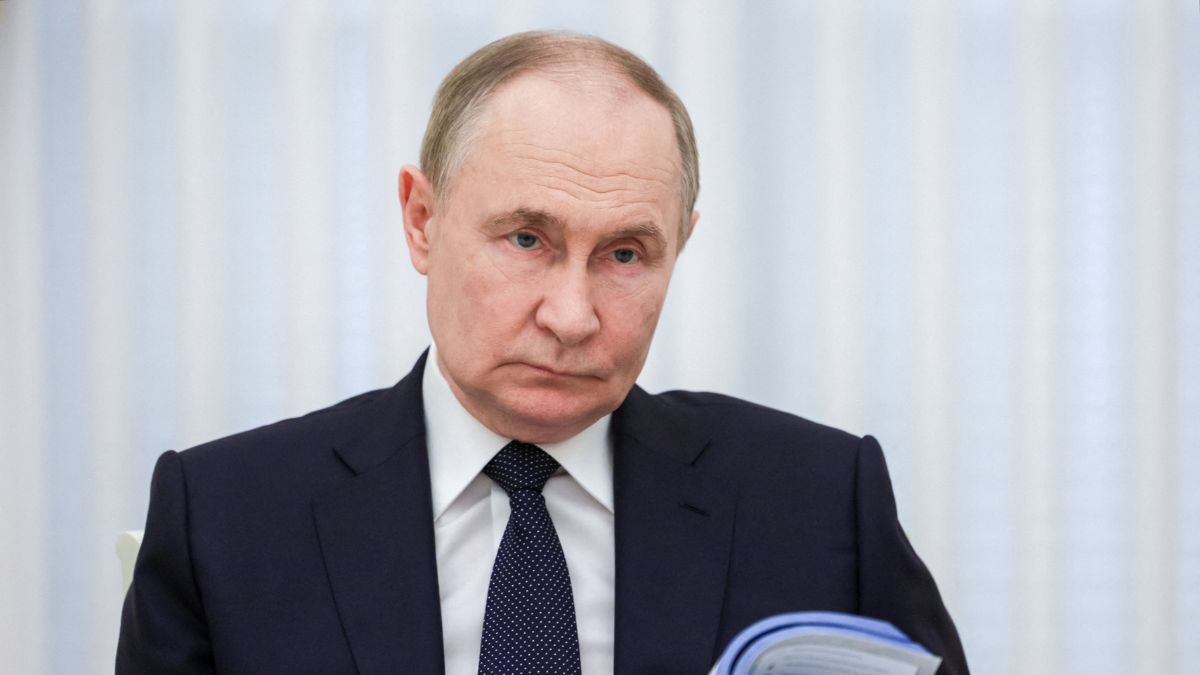After a swarm of 19 Russian drones breached Polish airspace, prompting Nato fighter jets to intercept and shoot down several of the projectiles, experts on Thursday said the incursions were no mistake but a calculated move that signals a dangerous shift in Vladimir Putin’s strategy, according to a Financial Times report.
If the Russian president’s aim was to test Nato’s air defences, the outcome likely pleased him, said the report, citing experts who warned it may embolden him to go further next time.
The incident marks the first direct military engagement between Nato and Russian forces since the start of the full-scale invasion of Ukraine more than three-and-a-half years ago, opening a perilous new chapter in the ongoing conflict.
“(Moscow) will have taken note that we have still not learned from what Ukraine has been dealing with for years,” FT quoted Ben Hodges, former commanding general of the US Army in Europe, as saying.
“We are absolutely not prepared for that . . . and now they are at our door,” he added.
Hodges emphasised the need for Europe to develop a multi-layered, integrated air defence system capable of assessing the scale of an incoming attack and deploying appropriate resources — in contrast to Wednesday morning’s response, where expensive fighter jets like Dutch F-35s were dispatched to take down low-cost drones.
“This was not an accident, obviously, given the number of drones,” Hodges was quoted as saying.
“This was a rehearsal. To probe, and find out how good are our early warning systems, what are our reaction times,” he added.
Italian Defence Minister Guido Crosetto called the drone incursion “a deliberate attack” that “had two purposes: to provoke and to test”.
“Moscow is deliberately fuelling an escalation that no one wants, “Crosetto said.
“It is evident that it has no interest in a truce or peace,” Crosetto added.
An Italian surveillance aircraft supported the fighter jets that shot down Russian drones on Wednesday.
Polish Prime Minister Donald Tusk said only four of the estimated 19 drones that entered Polish airspace were intercepted, as they posed a direct threat. The Polish military said most of the drones were decoys — a tactic Russia often uses to exhaust Ukraine’s air defences before launching actual strikes.
Nato has admitted that air defences on its eastern flank remain a weak point in urgent need of investment.
Secretary-General Mark Rutte praised the alliance’s “very successful reaction” and reaffirmed Nato’s commitment to defend “every inch of allied territory.”
“We need to invest more . . . so we have what we need to deter and defend,” FT quoted Rutte as saying.
The drone assault was part of a broader Russian attack on Ukraine involving missiles and drones, following earlier incidents where Russian projectiles briefly entered Nato airspace but were not intercepted.
A Polish arms industry official told the Financial Times that most of the drones identified were “Gerbera” — Iranian-designed Shahed drones without warheads, used as decoys ahead of missile strikes.
Polish officials believe the decoys were deliberately routed through Poland to bypass Ukrainian air defences near the western city of Lviv, ahead of a second wave of armed Shaheds targeting the area.
“One drone, what we have seen so far, may be a mistake,” FT quoted the arms industry official as saying. But “19 drones is not a mistake”.
Tusk told parliament that several drones had been launched from Belarus, which is set to host the large-scale Zapad military exercise with Russia starting Friday near the Polish and Lithuanian borders.
Germany “immediately increased the alert level” and provided data from its two Patriot air defence systems near Rzeszów, about 100km from Ukraine, according to its defence ministry.
“What this teaches us is . . . that we are under constant threat from provocations from Russian armed forces,” German Defence Minister Boris Pistorius told parliament.
Poland and the Baltic states are already on high alert ahead of the “very aggressive” Zapad drills, which simulate a joint response to a Nato attack.
On Tuesday, Tusk ordered a full closure of Poland’s border with Belarus.
Previous Zapad drills have simulated a nuclear strike on Warsaw, and the 2021 edition preceded Russia’s invasion of Ukraine.
According to Financial Times, citing analysts, this year’s exercise aims to test Nato’s reactions, showcase Russia’s military strength despite setbacks in Ukraine, and keep Nato’s eastern members in a state of anxiety.
Russian officials have ramped up hostile rhetoric, accusing Nato neighbours of aggression to justify possible retaliation.
In a Tass op-ed, Dmitry Medvedev accused Finland of “pursuing a confrontational course of preparation for war with Russia.” On Sunday, Nikolai Patrushev claimed the West had turned the Baltic Sea into an “arena for undeclared hybrid war.”
Tusk said the current situation is not “a state of war” but “significantly more dangerous than all previous ones.”
A Polish arms industry official said the drone attack aimed to “create a division in Nato between people who say ‘we must respond and help Poland’ and those who say ‘relax, they are just testing us, it’s no big deal’.”
Former Lithuanian foreign minister Gabrielius Landsbergis likened the drone incursion to past Russian sabotage on European soil.
“They are trying to set a new reality… Now imagine the same thing with drones. They do it once, we don’t react . . . and then there’s another attack, maybe not in Poland, maybe in Romania, maybe in Lithuania,” he was quoted as saying.
With inputs from agencies
End of Article

)

)